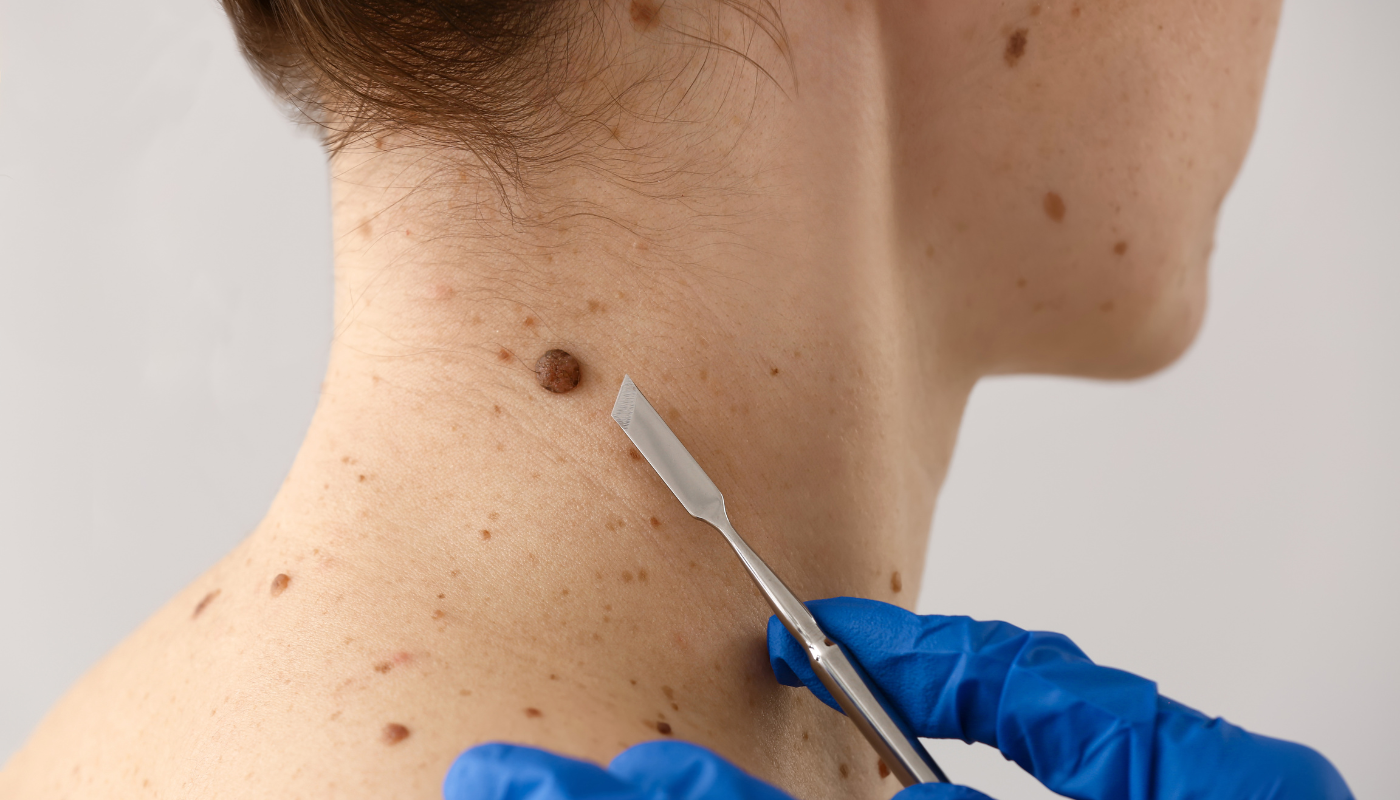What is Nodular Melanoma
Nodular Melanoma: Recognizing the Signs and Taking Action

Skin cancer is one of the most common types of cancer, and among its various forms, melanoma is considered the most dangerous.
Nodular melanoma, in particular, is an aggressive subtype that requires prompt diagnosis and treatment. This article aims to shed light on nodular melanoma, its characteristics, and the key signs to look for. Being aware of these signs can significantly contribute to early detection and improved outcomes.
Understanding Nodular Melanoma:
Nodular melanoma is a fast-growing, invasive form of melanoma that often appears as a raised, dome-shaped lesion on the skin. Unlike other types of melanoma that develop from existing moles, nodular melanoma often arises on previously unblemished skin. It tends to grow vertically into deeper layers of the skin more rapidly, making it more challenging to treat if not detected early.
Key Signs to Look For:
- Asymmetry: Like other forms of skin cancer, nodular melanoma often exhibits asymmetry, meaning one half of the lesion does not match the other half in terms of shape or size. Regularly examining your skin and seeking medical attention for any asymmetrical growth is crucial.
- Colour Variation: Nodular melanoma may display various colours within the lesion. These can include shades of brown, black, blue, red, or even white. The presence of multiple colours or a noticeable change in colour within a mole should raise concern.
- Elevated and Firm: One of the characteristic features of nodular melanoma is its raised and firm nature. The lesion may feel like a lump or a bump on the skin. It often lacks the typical flat appearance associated with common moles or benign growths.
- Rapid Growth: Nodular melanoma is known for its aggressive growth rate. Unlike other melanomas that may evolve slowly over time, nodular melanoma tends to enlarge quickly. If you notice a new growth on your skin that is rapidly increasing in size, it is essential to consult a healthcare professional promptly.
- Bleeding or Itching: Nodular melanoma can occasionally cause symptoms such as bleeding, crusting, or itching. These symptoms may arise due to the invasive nature of the tumor and its effect on the surrounding skin. If you experience persistent itching or notice any bleeding from a mole or lesion, it is crucial to have it examined by a dermatologist.
- Lack of Borders: Unlike benign moles with well-defined edges, nodular melanoma often lacks distinct borders. The lesion may appear uneven or fuzzy, merging into the surrounding skin. Any irregularity in the shape or border of a skin growth should be evaluated by a medical professional.
Seeking Medical Attention:
If you observe any of the aforementioned signs or have concerns about a suspicious growth on your skin, it is imperative to consult a dermatologist or healthcare provider. Early detection of nodular melanoma significantly improves treatment options and outcomes. The healthcare professional will conduct a thorough examination of the lesion, potentially perform a biopsy, and determine the appropriate course of action.
Prevention and Protection:
Prevention and early detection play vital roles in reducing the risks associated with nodular melanoma.
Nodular melanoma is an aggressive form of skin cancer that can quickly grow and spread. Protecting your skin from nodular melanoma requires a comprehensive approach that involves various preventive measures. Here are some essential steps to help protect your skin:
Sun Protection:
Nodular melanoma is often associated with excessive sun exposure. Protect your skin from harmful UV radiation by:
- Applying broad-spectrum sunscreen with a high SPF (50 or above) before going outside, and reapplying it every two hours or after sweating or swimming.
- Wearing protective clothing such as long-sleeved shirts, wide-brimmed hats, and sunglasses.
- Seeking shade or limiting outdoor activities during peak sun hours (usually between 10 a.m. and 4 p.m.).
- Avoiding tanning beds and artificial UV radiation sources.
Regular Skin Examinations:
Perform regular self-examinations of your skin to detect any changes or abnormalities. Look for new or changing moles, lesions, or spots on your skin, especially those with irregular borders, multiple colors, or larger than 6 millimeters in diameter. If you notice any concerning changes, consult a dermatologist promptly.
Professional Skin Checks:
Schedule regular skin checks with a dermatologist, especially if you have a personal or family history of melanoma or if you have many moles or atypical moles. Dermatologists are trained to identify suspicious skin lesions and can perform a thorough examination of your skin.
Promote Early Detection and Diagnosis:
- Familiarize yourself with the ABCDE rule to identify potential signs of melanoma: Asymmetry, Border irregularity, Colour variation, Diameter larger than 6 millimeters, and Evolving or changing features.
- Additionally, pay attention to the "Ugly Duckling" sign, which refers to a mole or lesion that stands out from the others on your skin.
- Report any concerning changes to your dermatologist immediately.
Avoid Environmental Risk Factors:
- Limit exposure to environmental factors known to increase the risk of melanoma, such as certain chemicals, toxins, or pollutants.
- Take precautions if you work with or are regularly exposed to substances like coal tar, creosote, or certain pesticides.
Know Your Family History:
Understand your family's medical history, particularly any instances of melanoma. If there is a family history of melanoma, inform your dermatologist, as it may warrant more frequent screenings and additional preventive measures.
Remember, while these measures can reduce your risk, they do not guarantee complete protection. Regular skin examinations, early detection, and prompt treatment are crucial for managing melanoma effectively. Consult with a healthcare professional or dermatologist for personalized advice and guidance regarding your skin health.
More Skin Tips.
CoreBodi










| Powered by Kaptol Media



